Rockwool has become an extremely popular growing medium within the hydroponic industry of late, and for a good reason. It’s reasonably inexpensive and readily available in many home depot or nursery outlets.
It has excellent water retention and aeration capabilities, as well as assists with the regulation of pH levels. One of the biggest issues with using this material is maintaining a balanced rockwool watering schedule.
When too much water is administered, the rockwool can become soggy and hurt the plants. Additionally, using a fast and powerful pouring watering can or hose can cause damage to both the Rockwool and the plant.
This is why it’s best to carefully plan out a rockwool watering schedule that can be executed in a calculated manner every time.
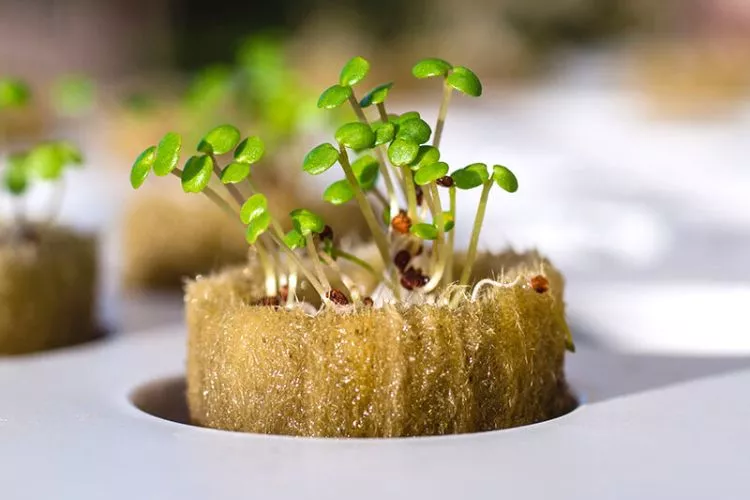
Luckily, that’s why we’re here today. Let’s achieve a sound watering practice so you never have to worry about damaging your plants again!
Table of Contents
Why is the Watering Schedule of Rockwool Important?
The main problems with watering plants growing in rockwool lie in balance and frequency. If the rockwool is overwatered, it will soak in all the water and then hold it to the root system, essentially bathing the roots in stagnant water.
When too much water surrounds a root system, there is no room for oxygen to get in. Oxygen is the root’s life force. This lack of oxygen can cause crop stress, root disease, and, ultimately, crop loss. In contrast, when the rock wool and plants aren’t receiving enough water, they will be denied nutrients and water.
These 2 elements are essential to the overall well being of the plant. Furthermore, the rockwool will dry out completely, and the plants will shrink and die.
The Ideal Rockwool Watering Schedule
Rockwool is created to allow the cubes to have the water required once watered. The problem is, doing so manually or not having the right settings on a dripper can ruin a whole crop.
When it comes to watering rockwool, you need to make sure that the different growth stages receive different amounts of water.
This growing medium is best irrigated with short, frequent applications of the applied nutrient solution. You want the roots to access just enough solutions to get through until the next application. A general all purpose schedule should look something similar to this:
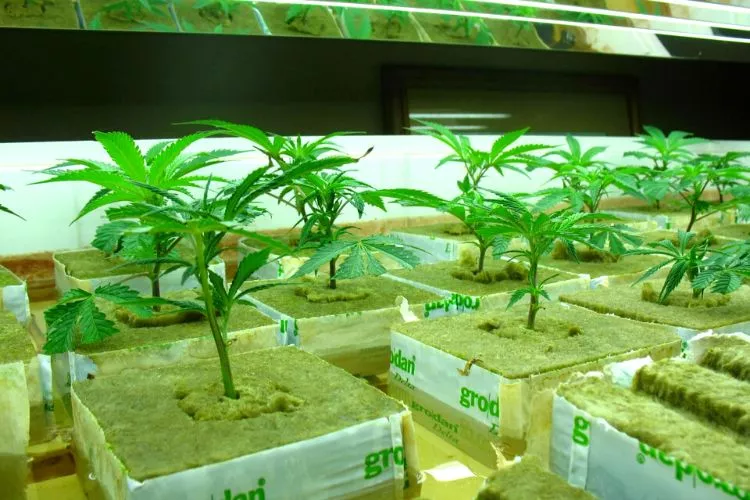
- Vegetative Growth (seed-growth-flowering prep) – Water once per day.
- Bloom Stage (maturity, budding/flowering) – Twice per day.
Remember that every plant type can vary in size, shape, and form. Meaning the amount of water they require can also vary. This is more of a rough guide. Even the most proficient growers will tell you that they always tinker with the amount.
How to avoid overwatering of rockwool?
Overwatering rockwool is one of the biggest problems that can occur when using the growing medium. If the rockwool is completely soaking, it won’t allow oxygen to supply the root system with important air and nutrients. The best ways to mitigate the issue of overwatering are to:
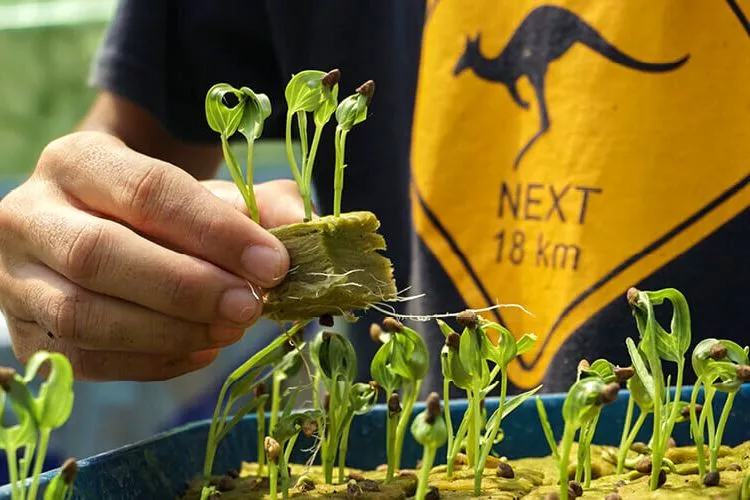
- Take the time to thoroughly observe the condition of the rockwool properly before watering again. Make sure that it is almost completely dry before applying more moisture. Don’t let it become bone dry, as that can cause other issues. Just soft to the touch.
- Use a soft pouring watering can or hose to have more control over the amount.
- Use slabs, if possible, to help regulate the nutrient solution. Slabs are essentially a larger, unseparated chunk of rockwool. If the rockwool is in separate slices, the solution can soak that one chunk. A slab can soak any excess nutrient solution into another section, making it useful and preventing overwatering.
The Factors Which Determines The rockwool Watering Schedule
Correctly watering rockwool takes a little bit of extra knowledge. Of course, it’s possible to just wing it and hope for the best, but calculation is key if you want to ensure no mistakes.
We can study several factors closely to help determine the exact amount of nutrient solution that our plants require. These factors include:
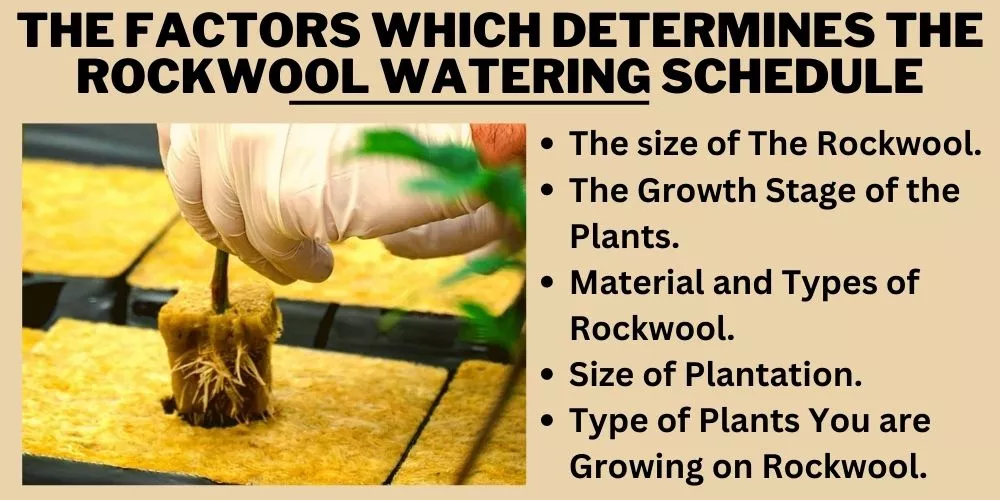
The size of The Rockwool
There are many different shapes and sizes of rockwool, especially if you have them custom made. The most common products are slabs or plugs. Slabs vary in size, but the most commonly purchased are 24 x 48 or 16 x 48 and are usually 3 inches deep, depending on the manufacturer.
Plugs are designed to be used on individual plants instead of multiple in one hydroponic setup. When it comes to water retention, the larger sizes will evenly distribute the moisture, which is great if you accidentally add too much.
The plugs, on the other hand, will only soak in as much as they can and hold onto it without being able to release it until it dries out.
The Growth Stage of the Plants
The amount of water required and therefore used by the rockwool can also be determined by the 2 different growth stages. When plants are in the vegetative growth stage, they should be watered once daily, so they may dry out a lot quicker than those grown in the flowering stage.
When plants go through their flowering stage, they often require double the daily water. This may allow the rockwool to stay moister for longer.
Material and Types of Rockwool
As previously mentioned, rockwool comes in 3 min forms. We talked about cubes/plugs and slabs, but they can also be purchased as granules.
These granules are just smaller versions of the cubes. The concept behind them is the same. You can use them to fill in around the top of low soaked cubes or slabs.
You can also use them to add water retention around plants that aren’t growing in a hydroponic system. The larger pieces of rockwool will soak and retain water for longer as they have the spaces to evenly distribute the water.
In contrast, the smaller granules will soak and must completely dry out before watering again.
Size of Plantation
Larger plants tend to draw in much more water than smaller ones. The rockwool may need additional water to meet the plant’s demand.
And, of course, the opposite effect will be caused by smaller plants. Their rockwool base can generally wait a little longer between drinks as the smaller roots won’t soak the water solution up as fast.
Type of Plants You are Growing on Rockwool
Like plant size, certain plant types can guzzle water faster than others. For example, tomatoes, squash, and melons grow deeper root systems, enabling them to absorb much more water than other plants.
Some other non-edible plants that soak up water quickly include Purple Coneflower, Bee balm, Globeflower, and Golden club.
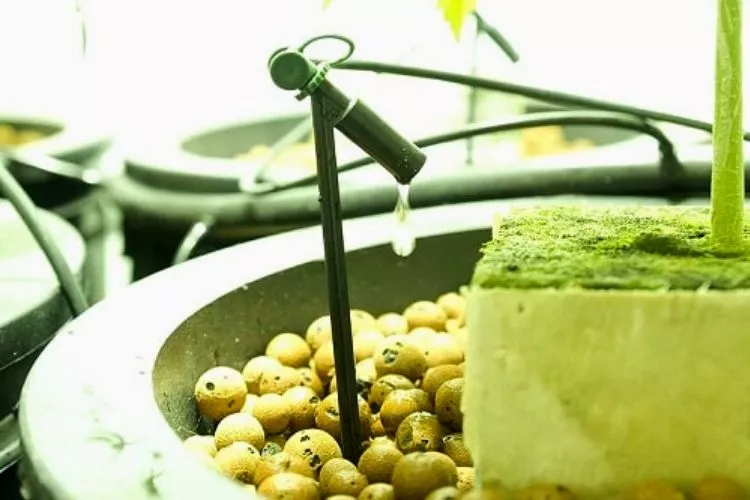
How do you water rockwool seedlings?
When it comes to watering seedlings grown in rockwool, there is a little bit of a trick to it. We have had great success using a soft pouring watering can as they are gentler and prevent dislodging the small seedlings. Once you have your kit ready to go, do the following:
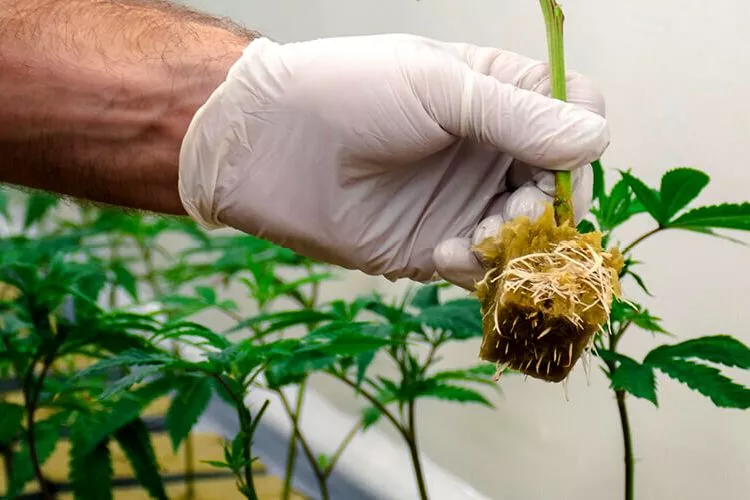
- Check to ensure that the rockwool isn’t sitting in any water. Once the rockwool becomes moist, any excess water will kill the seedlings. They need to be able to drain away consistently. You can have them sitting in a tray with drainage holes.
- Proceed by slowly and gently pouring water over the top of each seedling and their rockwool home. Make sure they are completely saturated.
- Put a humidity dome over them to lock in the warmth and moisture.
- Once the seeds begin to sprout, remove the dome and proceed to have them standing under lights for their next growth stage.
Explain: Hand watering rockwool?
There’s a lot of debate about whether hand watering rockwool is more effective. We have had great success doing so. This method avoids algae growth on top of the rockwool when watering.
Sometimes, these types of organisms manage to sit stagnantly and cause health issues for the plants. Therefore, instead of watering from above, you’re essentially pre installing the rockwool with a nutrient solution.
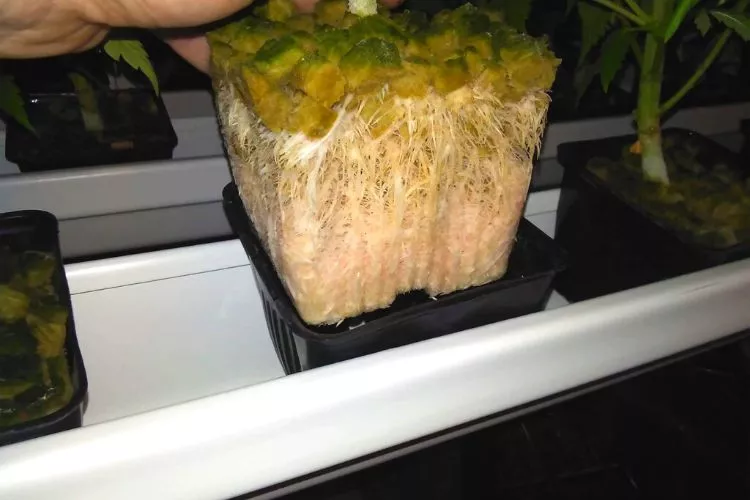
The process involves preparing the rockwool first by thoroughly soaking it. Then proceed by squeezing out around 10% of the water. This leaves enough to kick start the growth without the risk of becoming soggy.
Make sure to have them on a tray that can drain away, or else the excess moisture will drown the plants and kill them slowly but surely.
How long does it take to soak rockwool? What happens if you don’t soak rockwool?
When rockwool first became popular, most brands recommended at least 24 hours of soaking before use. They were much dense but had brittle outer edges.
As it stands now, though, they have become much better at their craft and created blocks that only require 30-60 minute pre soaking before using them.
Soaking the rockwool is an important step as it is exactly what this type of material is designed to do. The whole point of rockwool is to retain water, improve aeration and evenly distribute the nutrient solution to every nook and cranny of the growing plant.
This allows them to be consistently peppered with vital nutrients as well as oxygen as they begin to root out.
Frequently Asked Questions (FAQs)
Should rockwool touch the water?
Depending on the growing setup being used, rockwool should always be sitting somewhere where it can drain away from underneath. If it is watered from above or even hand watered then left to sit in a pool of water, it will go soggy and rot the roots of the growing plants.
How long can plants stay in rockwool?
Plants can stay in rockwool for their whole growth cycle, from seed to harvest. Some professional crop growers opt to use rockwool slabs that have 1m long X 10cm thick dimensions. Doing so will ensure that the roots will pop out from everywhere though. As long as there are no growth restrictions and a constant supply of water and nutrients, there is no problem in choosing to go down this path.
What causes root rot in rockwool?
The most common cause of root rot in rockwool is overwatering. If the rockwool can’t drain away, the roots are essentially sitting in a pool of water. This will cause them to rot. Furthermore, the roots aren’t able to breathe in their life, giving oxygen due to the poor aeration it causes.
Conclusion:
Understanding how to water rockwool the right way is essential to ensuring a long and fruitful life for your crops. The main thing to remember is to allow plenty of drainages and avoid overwatering.
We hope that this article on rockwool watering schedule has been helpful. As always, happy growing!


